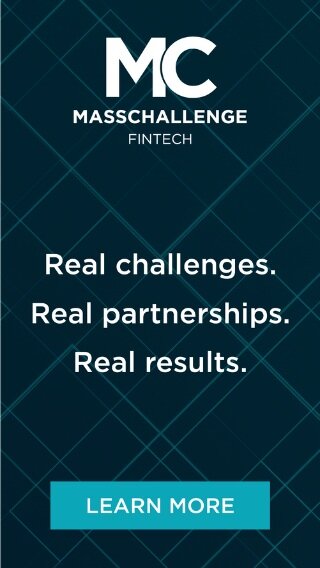Roadblocks to results: building better fintech partnerships
/Dan Latimore is chief research officer at The FR.
Banks’ use of fintechs to gain access to technology that’s better, faster, or cheaper than what they can build themselves is at its highest point ever. With so many relationships in place, it’s time for banks to focus on maximizing the benefits they reap. One area ripe for value realization – from increasing revenue, decreasing costs, and mitigating risk – is the ongoing monitoring, evaluation, and modification of the relationship. How well are banks delivering against their strategic objectives? Are the promised benefits materializing and are there others that could be exploited? And what needs to be done differently?
Adopting a methodical lifecycle for these partnerships, with a particular emphasis on improving execution in a structured way, will improve bank performance and pave the way for more fruitful future relationships. This will let banks move beyond the proof-of-concept phase to deliver solutions that solve customer problems at scale.
High-profile card launches like Goldman Sachs–Apple Card and Wells Fargo–BILT have attracted significant attention, not only for their initial promise, but also for the challenges they've faced. Let’s dig into where these partnerships aligned, and where they fell short.
1. Goldman Sachs–Apple Card
When Apple and Goldman Sachs teamed up to launch the Apple Card in 2019, their shared vision was to reimagine the credit card experience for the digital age. Two sterling brands had high hopes for a new approach to consumer credit. Apple may be a consumer technology company at its core, but it nevertheless plays in this space.
Core goals
Simplicity: Eliminate the complexity and hidden fees of traditional credit cards. The Apple Card promised no annual fees, late fees, foreign transaction fees, or over-the-limit charges.
Transparency: Help users understand their spending with real-time insights, color-coded categories, and budgeting tools built into the Wallet app.
Privacy & security: Introduce a card with no printed number, CVV, or expiration date, and use dynamic security codes for each transaction.
Daily rewards: Offer Daily Cash, a cashback program that credited rewards instantly, not monthly.
Digital-first experience: Seamlessly integrate the card into Apple devices, allowing users to apply, manage, and pay directly from their iPhone.
Goldman Sachs, new to consumer banking at the time, saw this as a bold step toward building a digital-first financial platform under its Marcus brand. Apple, meanwhile, wanted to extend its ecosystem into personal finance with a product that matched its design ethos and user-centric philosophy.
When things went right, the venture largely delivered from the consumers’ perspective. Delivering on the vision, though, was immensely more difficult than the companies thought it would be, particularly when complications arose.
Operational challenges
Customer service growing pains: Goldman was new to consumer banking and struggled with scale, leading to complaints about inconsistent servicing, especially during disputes and fraud resolution.
Manual processes: Some back-end processes were not fully automated, driving up costs and increasing error risk.
Economics and underwriting
High credit losses: Goldman took a relatively inclusive underwriting approach (to align with Apple’s consumer-friendly branding), which led to higher-than-expected delinquencies and charge-offs.
Loss-leader product: The Apple Card wasn’t profitable in the short term; Goldman subsidized rewards and infrastructure to meet Apple’s standards.
Strategic misalignment
Cultural mismatch: Apple emphasized user experience and simplicity; Goldman, a traditional investment bank, was not culturally aligned with consumer-centric operations.
Exit rumors and actual pullback: By 2023, Goldman was actively looking to exit its consumer partnerships, and Apple eventually moved toward American Express and others for future financial products.
While the partnership hasn’t yet been formally wound down, several contenders with much more consumer experience are jostling to succeed Goldman.
2. Wells Fargo–BILT Mastercard
BILT wanted to enable renters to earn rewards for perhaps their biggest monthly expense. You can earn points on most everyday purchases when using a credit card; why not apply that same logic to rent?
Core goals
Reward rent payments: Enable renters to earn points on rent without transaction fees, something no other major card offered at the time.
Provide a path to homeownership: Use rent rewards to help renters build credit and eventually transition into homeowners, aligning with Wells Fargo’s broader mortgage offerings.
Expand customer base: Tap into the younger demographic of renters (many under 30) and build long-term relationships that could lead to other Wells Fargo products like mortgages and other financial products.
Expand the loyalty program: Leverage Bilt’s rewards ecosystem to offer points not just on rent, but also on dining, travel, and fitness, creating a lifestyle-focused card.
This ambitious program failed quickly for several reasons:
Product complexity
Niche value proposition: BILT’s core innovation of letting users earn points on rent required complex integrations with property managers or workarounds like ACH / card pass-throughs. This added friction and operational complexity.
Scalability concerns: The model worked for a narrow segment (urban renters with tech-savvy behavior) but scaling outside of those demographics was unclear.
Bank fit and brand strategy
Wells Fargo as issuer: BILT initially launched with Evolve Bank and then moved to Wells Fargo, which was in the midst of repairing its reputation and building other co-brand deals with companies like Expedia. This raised concerns over whether the bank was ready to fully support a bleeding-edge fintech card.
Wells' internal priorities: The card was a deviation from Wells Fargo’s core card strategy, which traditionally emphasized risk management and cross-sell, not innovation-first models.
Profitability and unit economics
Low interchange margins on rent: Rent payments don’t generate the same interchange revenue as traditional purchases, putting pressure on profitability unless large scale or rent processing fees are captured.
High customer acquisition cost (CAC): BILT marketed aggressively and offered premium rewards (including airline point transfers), which created burn rate concerns.
Scaling fintech partnerships: the importance of the entire sourcing lifecycle
Had Goldman or Wells undertaken a thorough and structured evaluation of their projects they may have had different outcomes. Many have developed similar frameworks for approaching this situation; here’s mine.
1. Define strategic objectives
Before engaging with a fintech partner, banks should clearly articulate their strategic goals. Whether the objective is to create seamless payment solutions, enhance fraud detection systems, or improve customer onboarding experiences, identifying the desired outcomes in the context of the bank’s current tech strategy and capabilities ensures alignment between the bank and the fintech company.
It’s important to consider not just the benefits of the partnership, but also all the things that can go wrong. What will give rise to exceptions, and what’s the cost of handling them? What scale is required for profitability, and how long will it take to achieve? And how easy will it be to make midstream corrections to address the inevitable unforeseen issues?
2. Evaluate potential partners
The identification phase focuses on conducting thorough research to shortlist fintech firms that align with the bank's objectives. This involves:
Evaluating the fintech’s product-market fit and relevance to the bank’s needs
Assessing the company's reputation, scalability, and compliance maturity.
Reviewing third-party evaluations and references from other banks.
Selecting the right fintech partner requires a careful assessment of the following factors:
Technological compatibility: Ensure the fintech’s solutions integrate with the bank’s existing infrastructure.
Regulatory compliance: Every fintech swears that its compliance is top-notch; is it really?
Security standards: Assess the partner’s cybersecurity policies and ability to manage sensitive financial data.
Financial health: How financially viable is the fintech? What happens if it goes under or if VC funding dries up?
Innovation potential: Evaluate the fintech’s capacity for innovation and adaptability to market changes.
Cultural Fit: Can you work well together, or are there corporate personality clashes from the beginning?
3. Negotiate contract
Translating the sales promises into a binding contract can be delicate. Key factors to consider include:
Creating robust Service Level Agreements (SLA) that specify deliverables, performance metrics, and timelines. Focusing on measurable indicators and building mechanisms to track them, ideally in real-time, will enhance the chances of success.
Establishing clear governance structures and escalation procedures.
Determining whether there will be any gain or loss sharing.
Writing the “prenup”: what happens if the deal sours? It’s better to consider this possibility upfront to make the painful process of dissolution more manageable.
4. Kickoff project
During this phase, the bank and fintech jointly implement. This entails:
Project management to ensure timelines and milestones are met.
User acceptance testing to validate the solution’s efficacy.
Knowledge transfer and training for bank employees.
Building measurement capabilities.
It may be tempting to relax after the arduous process of negotiating the deal, but building a solid foundation is critical for ongoing success. If a bank doesn’t have much experience with third parties, it may want to engage outside help. If it is experienced, it must still devote appropriate resources. The fintech may also be able to play a meaningful role. Whoever participates, it’s important that every bank employee affected by the new endeavor has a clear understanding of the strategic intent and of how their role might change. Robust internal communication, including a help line, will help turn the vision into a reality.
5. Move into production
Post-transaction management focuses on ensuring the partnership delivers value by monitoring performance, addressing challenges, and identifying areas for further improvement. It’s important to identify key metrics from the outset so that monitoring mechanisms can be built in rather than retrofitted at a later date. More details follow, since this is an underused source of value realization.
6. Govern and adjust
Large financial institutions like Wells Fargo and Goldman Sachs have very publicly failed to meet their strategic objectives in fintech partnerships. To avoid suffering the same fate, banks need to develop a governance framework. It should include inputs from operations, service delivery, and management to address key agenda items, including:
Service delivery assurance
Annual 360-degree relationship review
Financial review
Strategy objectives/direction
Value realization
Final thoughts
No bank can go it alone in today’s environment; even the biggest rely on third-party technologies. A robust approach to realizing value from partnerships is critical, and the more experience a bank has, the better it will become. If a firm doesn’t have that experience today, there’s no shame in learning from third parties. Those institutions that master the art of executing partnerships will have a leg up on their competition.






